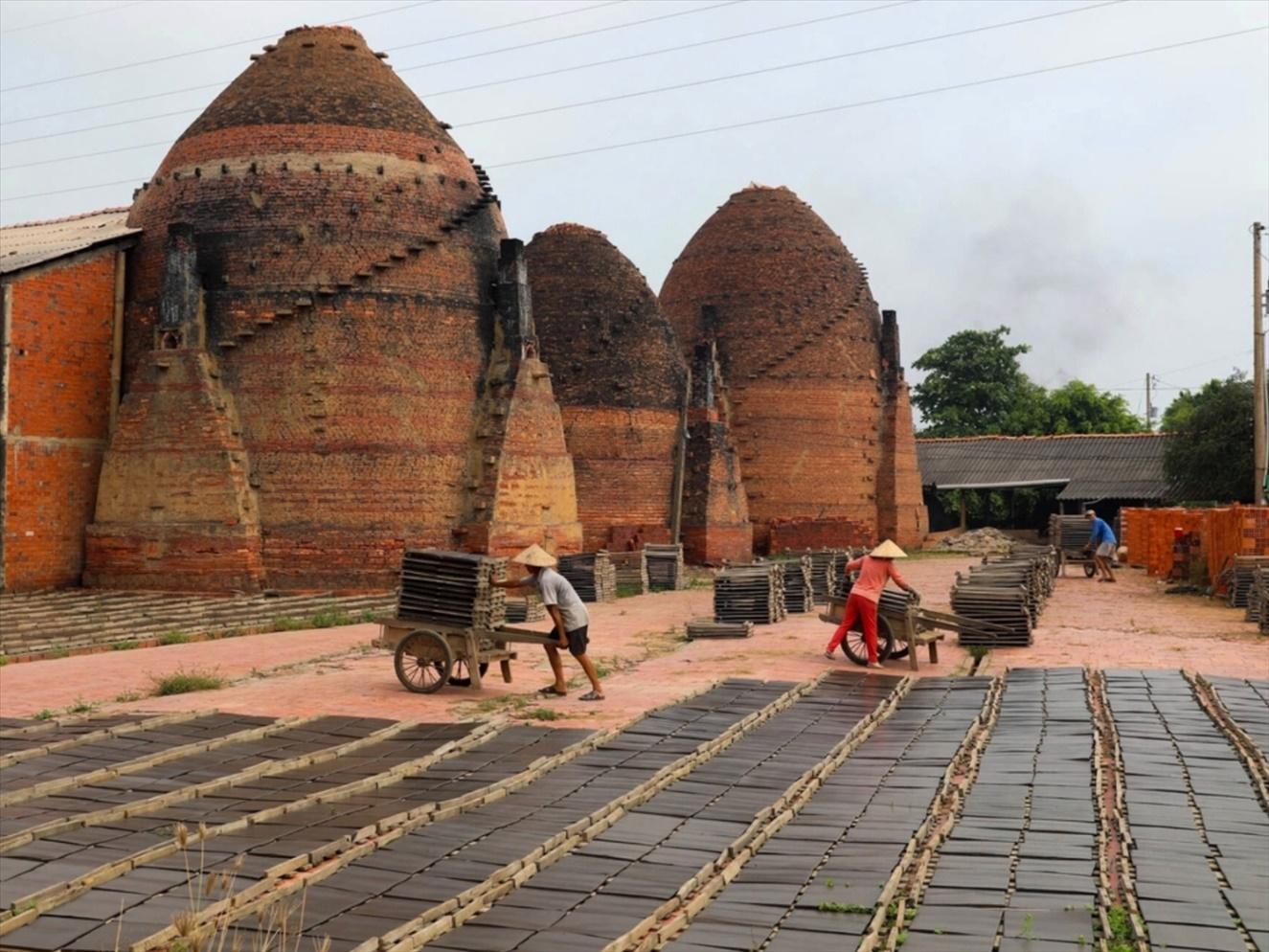Journey to Discover the Profound Cultural Beauty of Brick and Ceramic Kiln Craft in Vĩnh Long
The journey to explore the deep cultural beauty of brick and ceramic kiln craft in Vĩnh Long, one of the places that continues to preserve and develop this unique tradition in the Mekong Delta, will bring you truly impressive experiences. Accompanied by Mỹ Khánh Ecotourism Village, you’ll not only discover the region’s stunning natural beauty but also hear the fascinating stories behind this traditional craft.

(Mang Thít Kiln – Source: Collected)
Vĩnh Long, one of the central provinces in the Mekong Delta, is not only famous for its fertile soil and abundant fruit gardens but also marked by ancient brick and ceramic kiln villages. Known as the “Red Kingdom” or “Capital of Kilns”, the brick and ceramic craft of Vĩnh Long has been deeply rooted in the community for centuries.
Join Mỹ Khánh Tourism Village to dive deeper into the distinctive features of this traditional craft in Vĩnh Long through this article.
1. An Introduction to the Mang Thít Kiln – Vĩnh Long
.jpg)
(Mang Thít Kiln – Source: Collected)
Stretching along the riverside from Cổ Chiên to Mang Thít, Vĩnh Long is considered a hub of traditional brick and ceramic production. With its rich clay resources, the area has long been an ideal place for developing this industry. From its early days of brick making, local communities gradually shifted toward ceramic production, establishing Vĩnh Long as the largest center of handcrafted ceramics in the Mekong Delta region.
While the province is also known for its historical temples, stopping there would mean missing out on a significant part of Vĩnh Long’s charm. Just cross the Mỹ Thuận Bridge, and you’ll be immersed in the magical atmosphere of the brick and ceramic kiln villages. The kilns, clustered together, create a landscape resembling fiery towers glowing under the sun. Mỹ Khánh Ecotourism Village believes that you’ll be filled with awe and delight when witnessing this unique sight for the first time.
2. The Stories Behind Vĩnh Long’s Brick-Making Villages
2.1. The “Red Kingdom” of Brick and Ceramic Craft
.jpg)
(Mang Thít Kiln – Source: Collected)
Along the Cổ Chiên River, the sight of reddish-orange kilns, like giant mushrooms rising from the earth, gradually unfolds before your eyes. Not long ago, each household in Mang Thít District typically owned two to three kilns. The prosperity of this craft led to a continuous rise in brick and tile production, and many families even had to hire large numbers of workers to meet the demand.
The brick and ceramic kiln craft has been an integral part of life for riverside communities along Cổ Chiên and Mang Thít Rivers for more than half a century. Emerging in the early 20th century, the craft has gone through many ups and downs. Initially, locals used the abundant clay resources mainly to produce bricks and tiles. Later, the craft flourished and expanded into new regions.
At its peak, Vĩnh Long had more than 3,000 kilns, marking the golden age of this industry. By the 1980s, kiln owners began improving the quality of their products by increasing the firing temperature. This innovation elevated their products—from bricks and tiles to household items like bowls, plates, and cups—making them widely popular among consumers.
2.2. The Current Status of the Brick and Ceramic Craft in Vĩnh Long
.jpg)
(Mang Thít Kiln – Source: Collected)
Today, the value of brick and tile products has gradually declined, leaving thousands of kilns in Vĩnh Long idle. One major reason for this is the environmental impact—smoke and dust generated during production have caused pollution issues.
However, the local artisans of Vĩnh Long have not given up. They continue to research and innovate, creating new types of bricks such as naturally patterned silver-white bricks. Despite their efforts, the number of families maintaining kilns is steadily decreasing for various reasons.
To adapt, traditional kiln villages in Vĩnh Long are evolving by integrating their craft with tourism. Visitors often remark that the kiln clusters along the Mang Thít and Long Hồ rivers retain their historical charm and reputation, providing ideal conditions for developing unique cultural tours. Tourists can visit and explore famous brick and ceramic kiln villages along the Cổ Chiên and Mang Thít Rivers, and purchase distinctive ceramic souvenirs for their loved ones.
3. Exploring the Mang Thít Village
.jpg)
(Mang Thít Kiln – Source: Collected)
Mỹ Khánh Ecotourism Village believes you’ll be captivated by the sight of hundreds of moss-covered, dust-streaked kilns—creating an image as if each kiln is wearing a timeworn, ancient robe. Everyone who visits feels the nostalgic beauty and magnetic charm of these kilns, making it a perfect spot to capture breathtaking photographs.
If you visit during the brick- and ceramic-making season, especially at its peak, you’ll witness a mesmerizing scene: smoke billowing skyward from dozens of active kilns. From afar, the Mang Thít kilns of Vĩnh Long look like a miniature “Red Kingdom”, with hundreds of small “castles” lined up side by side.
Moreover, visitors can also explore remarkable architectural works built entirely from ceramics—unique and impressive structures that showcase local craftsmanship. Don’t miss the chance to experience this one-of-a-kind attraction when visiting Vĩnh Long!
 Competency profile
Competency profile  Travel guide
Travel guide  Collection
Collection  Search
Search  Contact
Contact 











